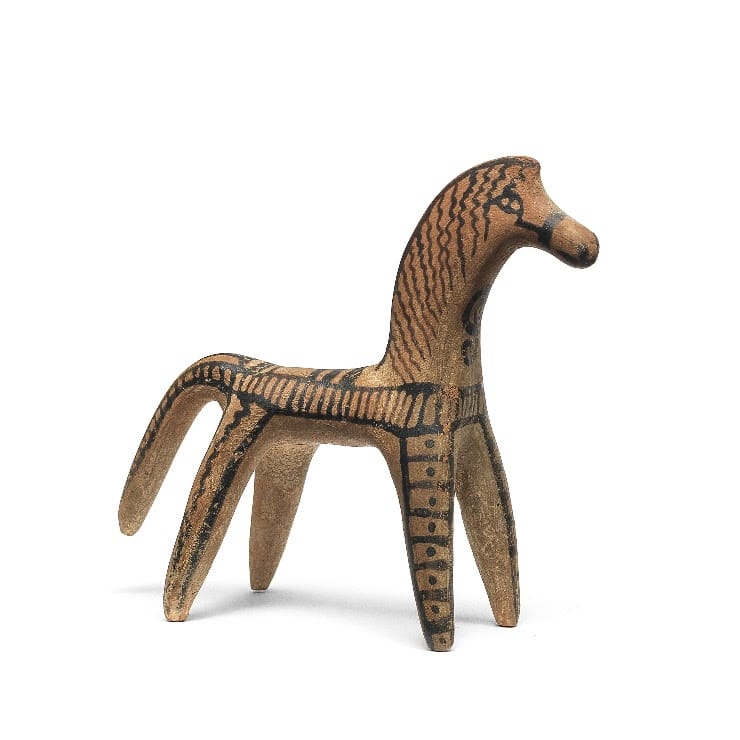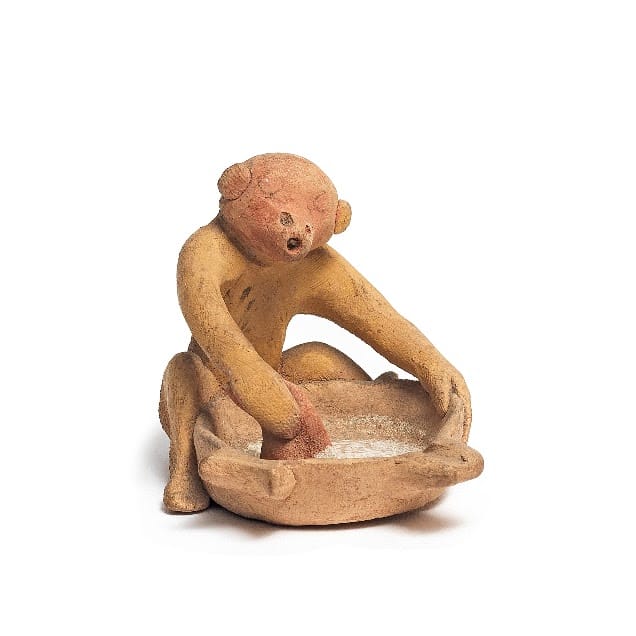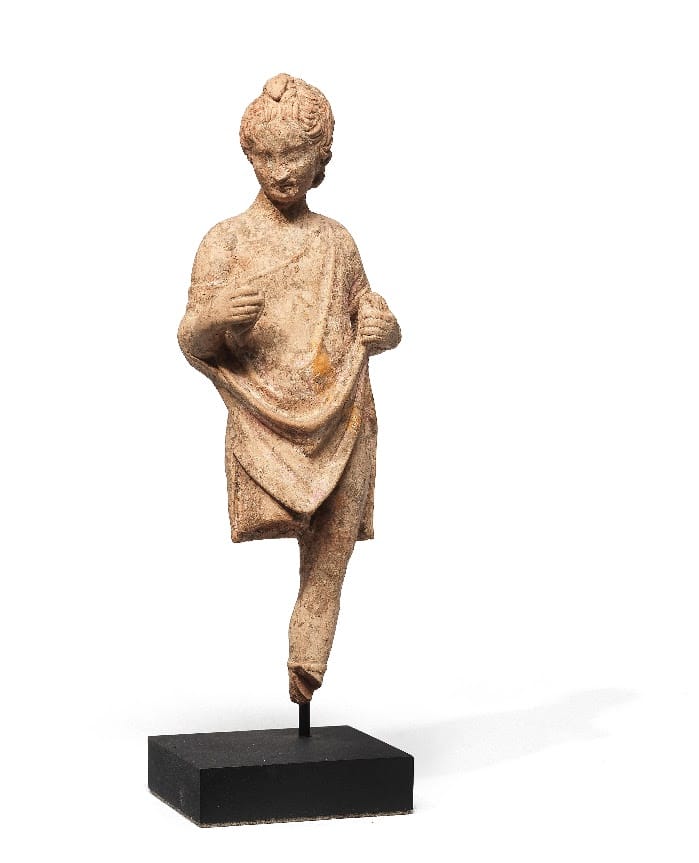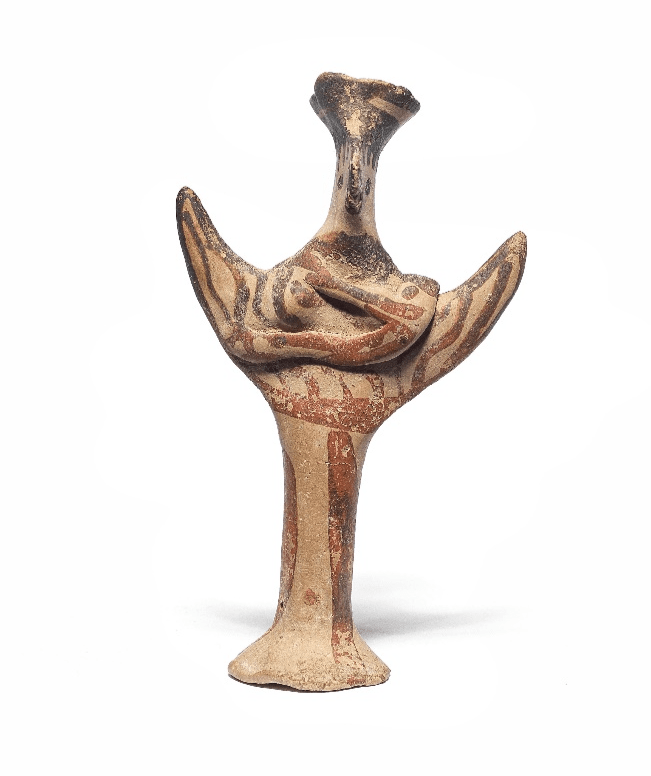London – A hauntingly beautiful, perfectly preserved 3,000-year-old Mycenean terracotta Kourotrophos stars in a wonderful collection of early Greek artefacts to be offered at Bonhams Antiquities sale in London on Thursday 7 July. Extremely rare, the figure is estimated at £3,000-5,000.
Bonhams Antiquities consultant, Joanna van der Lande, said: “Kourotrophos was a term applied to any god or goddess who offered protection for the young. The same word is used for their votive figures, and these come in all shapes and sizes and usually depict a woman or goddess with a child. The Mycenaean Kourotrophos in our sale shows a very rare Psi figure (arms raised, in the form of the Greek letter) with an infant. It is almost impossible to find depictions of mother and child like this anywhere other than museums, so this really is a once in a lifetime opportunity for collectors.”
The same collection also offers a number of animal themed lots such as:


- A finely preserved horse from Boeotia, dating to the mid-6th Century B.C., with its coat indicated by linear bands on the body. This was a favourite subject for the Boeotians (an area on the mainland of Greece), owning a horse being a sign of wealth for the Greeks of this period. Estimate: £1,200-1,500.
- A miniature sculpture of a Corinthian monkey holding a pestle in his right hand. Remarkably, this miniature sculpture is in excellent condition and retains far more of its original colour than is usual with the little face painted red and the body yellow. Estimate: £2,000-3,000.
The sale also features:
- Fifteen frames containing fragments of ink inscribed papyri with remains of polychrome vignettes and hieroglyphic text from the Book of the Dead for Qed-Mut New Kingdom, mid-18th-early to 19th Dynasty, early 14th to mid-13th Century B.C. These extraordinary ancient relics of multiple fragments were inscribed on papyrus that was harvested over 3000 years ago. They were decorated with polychrome vignettes and hieroglyphic text, with much of the original colour remaining. The collection of spells and magic formulae contained in the Book of the Dead, were believed by the ancient Egyptians to protect and assist the deceased in their afterlife.


Artefacts from an extensive private Scottish collection. A particular feature of the collection are the fine terracotta sculptures which include a group of two dancing women. There is a real sense of dynamism to the sweep of the drapery of the figure on the left as she executes her dance moves as well as an accurate depiction of how the material itself would have fallen. (Estimate: £2,000-3,000). The charming figure of a boy from the same collection still bears faint traces of colour, including gilding, a reminder that vivid colours would originally have adorned terracotta figures, and of course marbles. Estimate: £1,200-1,800.
